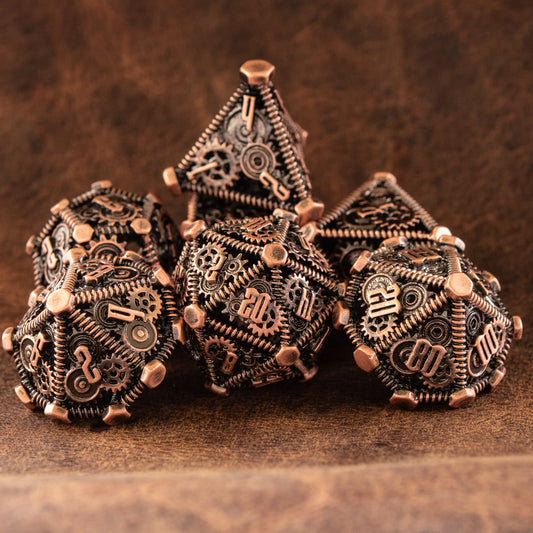who invented dice
Share
Dice have been an integral part of human civilization for thousands of years. From ancient rituals to modern games, these small objects have played a significant role in various cultures. But who invented dice, and how did they evolve over time?
Ancient Origins of Dice
Early Evidence and Archaeological Findings
Dice-like objects have been found in various ancient civilizations, including Mesopotamia, Egypt, and India, dating back to around 5000 BCE. These early dice were crafted from materials readily available in their environment, such as fruit pits, pebbles, shells, and knucklebones. The presence of these objects in archaeological sites indicates that early humans were already engaging in games of chance and divination rituals.
Dice in Ancient Civilizations
In ancient civilizations, dice were used not only for gaming but also in religious practices and divination rituals. For instance, the Royal Game of Ur in Mesopotamia, Senet in Egypt, and Liubo in China are some of the earliest known dice games. These games were often associated with religious ceremonies and were believed to have the power to predict the future or communicate with deities.
The Evolution of Dice
Transition from Knucklebones to Cubes
The earliest dice were often fashioned from knucklebones, which served as precursors to modern cubic dice. Around 3000 BCE, cubic dice began to emerge in Mesopotamia and the Indus Valley. This transition marked a significant evolution in the design and use of dice, paving the way for more standardized gaming tools.
Materials and Craftsmanship
Ancient dice were made from a variety of materials, including bone, ivory, and stone. The craftsmanship of these early dice was often intricate, reflecting their cultural significance. Dice were not merely functional objects; they were also artistic expressions, often adorned with symbols and designs that held cultural or religious meaning.
Cultural Significance of Dice
Dice in Religious and Social Contexts
Dice have held a prominent place in religious rituals and social contexts throughout history. In many cultures, dice were used in fortune-telling and religious ceremonies. The symbolism of dice in art, literature, and media often reflects themes of fate, chance, and the unknown.
Dice in Ancient Greece and Rome
The Greeks and Romans made significant contributions to the standardization of dice. Greek and Roman dice were typically cubic and made from materials like bone, bronze, and glass. These civilizations also popularized the use of dice in gambling and social activities, with games like Tali and Tesserae becoming widespread.
Dice have a rich and fascinating history that spans millennia and cultures. From their origins in ancient divination practices to their role in modern gaming, dice have evolved in both form and function. Their enduring appeal lies in their ability to bridge the gap between chance and skill, making them a timeless tool for entertainment and decision-making.
The Modern Evolution and Impact of Dice
Dice in the Medieval and Renaissance Periods
New Materials and Designs
During the medieval and Renaissance periods, the art of dice-making saw significant advancements. Dice were no longer just simple bones or stones; they started to be crafted from a variety of materials, including ivory, wood, and precious metals. These new materials allowed for more intricate and elaborate designs, turning dice into status symbols for the wealthy and powerful.
- Introduction of Ivory, Wood, and Precious Metals: The use of these materials not only made the dice more durable but also allowed artisans to create more ornate and visually appealing designs.
- Elaborate Designs and Status Symbols: Dice became a reflection of one's social standing. Nobles and royals often had custom-made dice adorned with intricate carvings and inlays, showcasing their wealth and sophistication.
Rise of Gambling and Dice Games
The medieval period also saw the rise of gambling and the development of various dice games. These games were popular across different social classes, from peasants to kings.
- Popular Medieval Dice Games: Games such as Hazard, Highest Point, and Shuffle gained popularity. These games were not only a source of entertainment but also a means of social interaction and competition.
- Development of Loaded Dice and Cheating Techniques: With the increase in gambling, the art of cheating also evolved. Loaded dice and other cheating techniques became common, leading to the creation of more complex and regulated gaming environments.
The Industrial Revolution and Mass Production
Standardization and Accessibility
The Industrial Revolution brought about significant changes in the production and availability of dice. Mass production techniques made dice more accessible to the general public, and standardization ensured fairness in games.
- Impact of Mass Production on Dice Availability: The ability to produce dice in large quantities reduced costs and made them widely available. This democratized the use of dice, allowing people from all walks of life to enjoy dice games.
- Standardization of Dice Design and Quality Control: Standardized designs and strict quality control measures ensured that dice were fair and consistent, reducing the prevalence of cheating and enhancing the gaming experience.
Role-Playing Games and Polyhedral Dice
The advent of role-playing games (RPGs) in the 20th century introduced a new variety of dice, known as polyhedral dice. These dice, with their multiple sides, brought new dimensions to gaming.
- Introduction of Polyhedral Dice in RPGs: Games like Dungeons & Dragons popularized the use of polyhedral dice, including the iconic 20-sided die (d20). These dice allowed for more complex game mechanics and richer storytelling.
- Significance of the 20-Sided Die (d20) in Gaming Culture: The d20 has become a symbol of RPG gaming, representing the blend of strategy, chance, and creativity that defines the genre.
Modern Innovations and Future of Dice
Technological Advancements
In the modern era, technology has revolutionized the way we use and perceive dice. Digital tools and advanced manufacturing techniques have opened up new possibilities for dice design and functionality.
- Digital Dice Rollers and Online Gaming: Digital dice rollers and online gaming platforms have made it easier than ever to play dice games remotely. These tools ensure fair play through advanced algorithms and provide a convenient alternative to physical dice.
- Integration of Augmented Reality (AR) and Blockchain Technology: AR and blockchain technology are being integrated into dice gaming, offering immersive experiences and ensuring provably fair rolls through cryptographic verification.
Eco-Friendly and Customizable Dice
As sustainability becomes a global priority, the dice industry is also moving towards eco-friendly practices. Customization options are also becoming more popular, allowing players to create personalized dice.
- Use of Sustainable Materials and 3D Printing: Manufacturers are exploring sustainable materials like recycled plastics and biodegradable resins. 3D printing technology enables the creation of intricate and customizable dice designs.
- DIY Dice-Making and Personalized Designs: The DIY movement has gained traction, with enthusiasts crafting their own unique dice sets. Personalized designs add a personal touch and make each set of dice truly one-of-a-kind.
Conclusion
Summary of Dice Evolution
From their ancient origins to modern innovations, dice have undergone a remarkable journey. They have evolved from simple tools for divination and games to complex objects used in various contexts, reflecting our growing understanding of probability, mathematics, and the role of chance in the world.
Call to Action
Dice continue to captivate people of all ages, offering endless possibilities for gaming and beyond. Whether you're a casual player or a dedicated gamer, exploring the rich history and diverse applications of dice can enhance your appreciation for these small but powerful objects. Share your favorite dice games and experiences, and embrace the enduring appeal of dice in your own gaming adventures.

